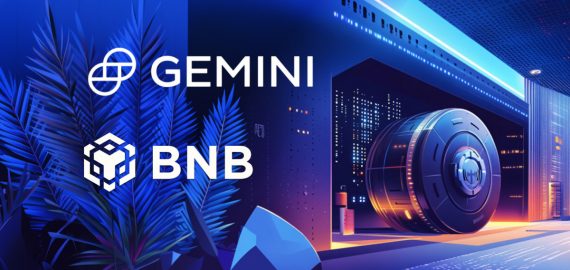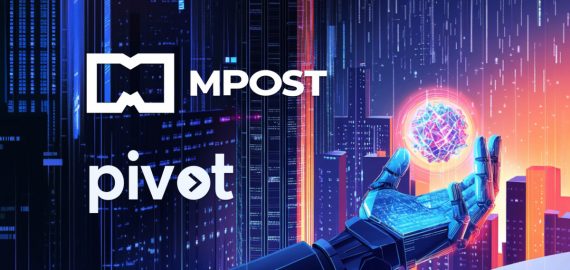2025 and Beyond: What’s Next for Blockchain Technology?


In Brief
Blockchain technology is poised to revolutionize industries like finance and telecom in 2025, addressing scalability and sustainability challenges while advancing from its early days.

Blockchain has come a long way since its early days of powering cryptocurrencies. As we step into 2025, this technology is on the brink of revolutionizing industries—from finance to telecom—while addressing long-standing challenges like scalability and sustainability.
So, what groundbreaking changes can we expect this year? Let’s explore.
New Levels of Blockchain Operation & Scalability
Scalability is a major issue for blockchain technology. Recently, layer-2 solutions like Optimistic Rollups have been popular because they improve upon the original blockchain in terms of trade speed and cost while keeping the blockchain itself secure. In 2025, we can predict even more advanced layer-2 protocols that can manage more transactions without sacrificing decentralization.
On top of that, launching L1 solutions has become incredibly easy. Nick Mussallem, a leading figure at AvaCloud, stated that there are no longer any “technological barriers” to starting your own blockchain. For less than the monthly average of takeout, you can establish a bespoke Layer 1 (L1) blockchain with your own native coin in minutes and with no programming.
Green Blockchain Mechanisms
Consequently, the environmental effect of blockchain networks, particularly those built on proof-of-work (PoW) consensus processes, has been a driving force in the development of green blockchain networks. Green consensus algorithms, such as PoS and DPoS, are being considered by blockchain projects that aim to be sustainable.
For instance, Algorand utilizes pure PoS as its platform, but Tezos leverages liquid PoS to reduce its carbon footprint. More and more people around the world are worried about the impact of technology on the environment and society, and this shift reflects that.
Altcoins On the Rise
Institutional investors have begun to prioritize staking as the cryptocurrency sector develops. At the moment, about 29% of ETH is staked across 1M validators.
Staking by institutions hit a new high in 2024, with 70% ETH-holding organisations engaging in the practice. Also, more than 50% of these institutions chose liquid staking solutions, indicating an increasing need for adaptable and revenue-generating alternatives.
Solana also had a tremendous year, acquiring +$200 million in private funding from major companies like BlackRock.
Ava Labs’ Leandro Davo also pointed out that the blockchain will play a key role in spreading this wave of stablecoin into Latin America, stressing that major enterprises and governments can either adapt to the growing crypto-friendly environment or “risk being left behind” in the traditional world.
Blockchain & Telecom
Blockchain technology can be used for more than just crypto. It can be used in many other fields as well.
For instance, using blockchain technology for businesses may make the supply chain more efficient, transparent, and traceable, which in turn can cut down on fraud and improve product quality.
In the financial sector, blockchain technology has the potential to radically alter industries like securities trading and global payment services.
But, we can expect the biggest rise in the telecom sector. Ava Labs’ Justin Fiddes recently stated that DePin has become a popular solution in “low-coverage” regions to maximize network effects.
That is why Blockchain-based protocols like Helium, Uplink, and Quantinium have become more popular among legacy telecommunications companies. These companies are afraid of falling behind, so they will likely keep adopting the technology.
AI & Blockchain to Grow Side by Side
AI and blockchain have tremendous promise when they come together.
Many incidents point to the potential of decentralized AI to improve data privacy and safety, as there’s a growing trend in the crypto industry to train AI algorithms on decentralized networks. We can also use AI to enhance blockchain efficiency, create more advanced dApps, and boost chain security.
Lydia Chiu, CIO of Avalanche’s Blizzard Fund, stated that AI’s surge is “undeniable.” While acknowledging the growing trend of using AI for provenance tracking, she hinted that 2025 will show us how AI and blockchain can improve one another.
RWAs in Demand
Tokenizing physical assets, known as real-world assets (RWAs), is transforming blockchain’s future by offering unparalleled benefits like fractional ownership and enhanced liquidity. From real estate to precious metals, tokenization breaks down barriers, making high-value assets accessible to broader audiences. Secondary markets further amplify these advantages by enabling seamless trading of tokenized assets.
Morgan Krupetsky, Senior Director at Ava Labs, foresees Web2 companies embracing tokenization with embedded distribution channels. Beyond stablecoins and money market funds, 2025 will likely witness growing demand for tokenized equities, fixed income, and other financial instruments, pushing blockchain adoption into new territories.
DLT & The Chain of Trust
Building a strong chain of trust between many stakeholders will be crucial in 2025, when more and more apps integrate AI models into corporate processes To gain confidence in AI systems, this chain has to do three things: comply with regulations, evaluate AI data openly and make AI-driven outcomes more transparent.
Distributed ledger technology (DLT) is well-suited to tackle these issues because it has proven useful in establishing trust chains in tight sectors such as finance, food, and healthcare, where it can record data immutably with timestamps and provide access to multiple parties simultaneously.
Prove AI’s CTO, Greg Whalen, suggests that businesses can tackle many of the credibility and transparency issues with AI by using tried and true DLT solutions. In 2025, DLT and AI will pick up speed as more and more organizations realize they need to build trust and transparency into their AI networks from the bottom up.
Similarly, NCC Group’s Alessia Olivieri believes that the growing adoption of blockchain will create new security concerns, especially with smart contracts. Because these contracts can be vulnerable to hacking, strong security measures and creative solutions are needed to safeguard blockchain-based platforms.
What Does 2025 Hold in Store for Blockchain?
Scalability, security, compatibility, and practicality are driving trends that will soon cause a dramatic shift in the blockchain sector.
Any blockchain supporter, developer, or investor should stay updated on these developments in 2025, when technology is expected to reach a tipping point and legal frameworks to begin to finally take root with the new “crypto-friendly” US administration.
Disclaimer
In line with the Trust Project guidelines, please note that the information provided on this page is not intended to be and should not be interpreted as legal, tax, investment, financial, or any other form of advice. It is important to only invest what you can afford to lose and to seek independent financial advice if you have any doubts. For further information, we suggest referring to the terms and conditions as well as the help and support pages provided by the issuer or advertiser. MetaversePost is committed to accurate, unbiased reporting, but market conditions are subject to change without notice.
About The Author
Victoria is a writer on a variety of technology topics including Web3.0, AI and cryptocurrencies. Her extensive experience allows her to write insightful articles for the wider audience.
More articles

Victoria is a writer on a variety of technology topics including Web3.0, AI and cryptocurrencies. Her extensive experience allows her to write insightful articles for the wider audience.

















































